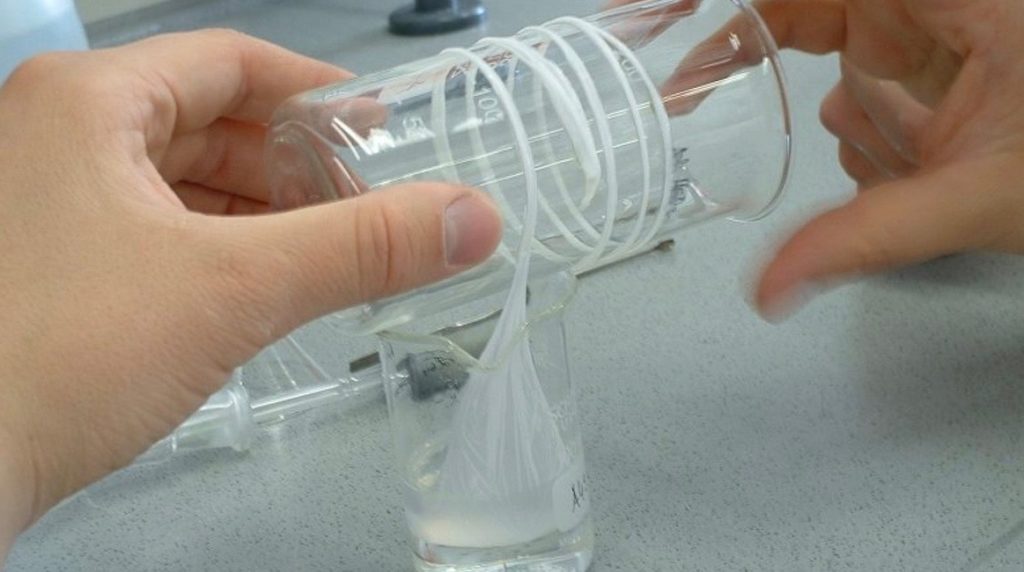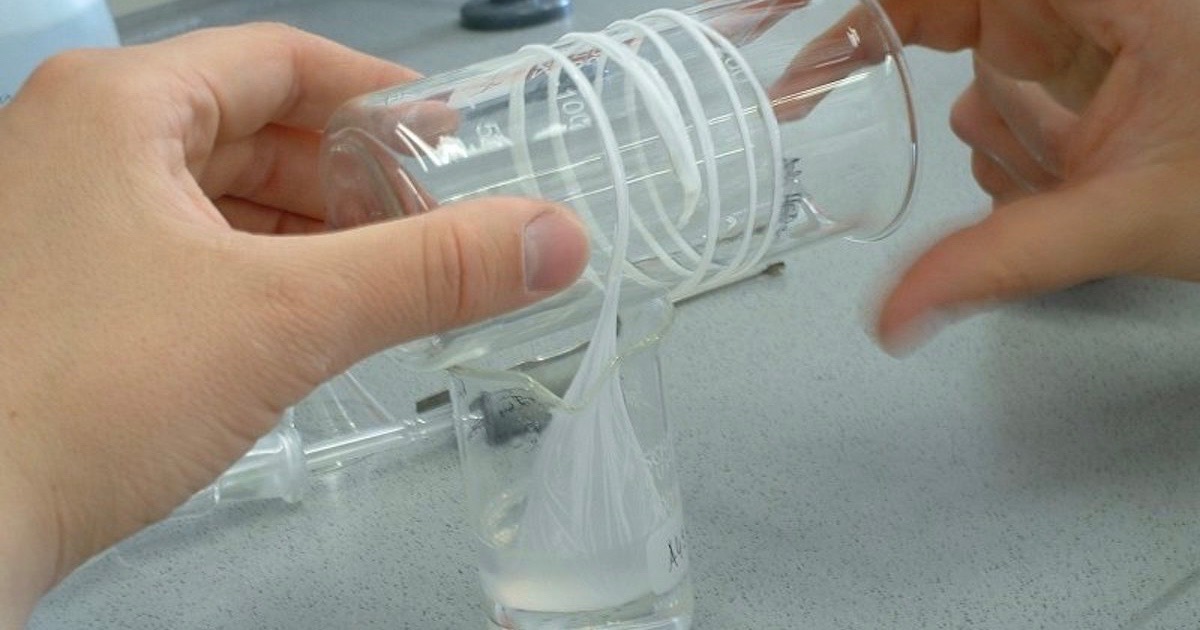 Evolution
Evolution
 Intelligent Design
Intelligent Design
Adaptation in Action Yields a Repurposed Enzyme


“Nylon-eating bacteria? What the heck?” you say. “Why does this matter?” Well, nylon was first made in the 1930s. An enzyme (protein) able to degrade nylon byproducts turned up a mere 40 years later in the 1970s. So where did the enzyme come from?
For those of us who argue about explanations of biological origins, the question of how easy it is to get new enzymes, new functional proteins, matters. That’s because there are thousands of proteins whose origins need to be explained. If just about any amino acid sequence can make a functional protein fold, then that’s one less problem for evolution to explain. But if amino acid sequences that can fold into a stable shape and that are functional are very rare, then that is a problem for the unguided evolutionary explanation of life. The nylonase frameshift story, to return to our beginning, tried to argue that it was easy to get a new protein with function. But the story’s not true, as I will show.
I first got interested in the nylonase story because of the claims Dennis Venema made on his BioLogos blog Letters to the Duchess (“Intelligent Design and Nylon-Eating Bacteria“), and in his book Adam and the Genome. To check out the story I did a careful survey of the work of a number of Japanese scientists who had investigated the enzyme nylonase, and I came to the conclusion that there was a simple explanation for the apparent appearance of nylonase activity: it had evolved by a two-step mutational process, a classical evolutionary process where each mutational step was beneficial. The new protein was not the result of a frameshift mutation, which would be extremely improbable, but rather it was the result of two nucleotide changes to the DNA of an existing gene, a gene that encoded a protein that was already degrading carboxy esters (related to nylon byproducts in conformation) and that was almost able to degrade nylon by-products already.
A Problem for Evolution
The interesting thing is that my critics think that I have given away the show by acknowledging that “new” enzyme functions can arise by mutation and selection. This is foolish. Anything that is within reach of a few mutations and follows a selectable path, i.e., where each step on the path is beneficial, is likely to happen (but see “A Leaky Faucet: Why Darwinian Evolution Leads to Loss of Information“). The problem for evolution occurs when you have to get several mutations before any benefit occurs. There is no natural selection to preserve the mutations as they occur, or to spread them through the population, so it can take a very long time.
It should be obvious from what I have said that I do not think nylonase is the result of a frameshift. It should also be clear that I do not deny that evolution on a small scale can take place. Neither do any other intelligent design scientists I know deny small-scale genetic change. Call it a gain in information if you want — it’s a very small gain, and it’s the result of information already present in the environment.
The other thing I notice is that most of our critics have no concept of what it takes to get a functional protein, of any kind, from random sequence. Proteins derive their function from their three-dimensional shape, which is specified by their amino acid sequence. A really good short explanation can be found here: “Why is protein folding an important problem? What are its applications?”
Notice that the protein’s function depends on its shape, and its shape depends on its sequence of amino acids. Notice also that a major problem for the cell is misfolded proteins. In fact, the cell spends a lot of energy trying to make sure proteins fold properly. Proteins with a random sequence will not fold, they will aggregate, clump together, and be useless. This is because a random sequence does not promote the kinds of interactions necessary for folding.
Now consider the nylonase story as it was stated in the past. The claim was that supposedly a frame-shift mutation, an insertion of an extra nucleotide into the DNA sequence of a gene of unknown function, had supposedly totally changed the way the DNA sequence was read, meaning that a completely new protein sequence was produced. This random sequence didn’t have interrupting stop codons, which is unusual, and it also didn’t aggregate, supposedly, but instead folded nicely into a stable, functional protein capable of degrading nylon byproducts. There is no evidence that any of this story is true. No one has ever found any trace of the supposed original protein in any database. The story is bogus.
Why? The story is contrary to what we know of molecular biology and biochemistry. When a simpler, adaptive path to nylonase function exists, one that is verified by actual experiments, and that does not depend on something as highly improbable as a functional protein coming from a frameshifted random sequence, then it should be clear that the simpler, more likely story is a better explanation. This is true especially when it can be demonstrated that two mutations to a preexisting enzyme do switch it to nylonase activity.
Déjà Vu, All Over Again
Meanwhile, it’s déjà vu: we have in the news an article in the Proceedings of the National Academy of Sciences describing a bacterial strain capable of digesting a man-made plastic. Why is this newsworthy? Other bacterial systems have been identified that can degrade man-made compounds, most notably the poster child for evolutionary storytelling, Flavobacterium and its wonder enzyme nylonase. I described the true origin of nylonase above and in a series of articles last year, debunking the claims that nylonase arose as a completely novel, functional protein from random sequence.
The reason for the headlines this time around? It’s nothing so dramatic, but it is good news. Scientists have discovered a bacterium, called Ideonella sakaiensis 201-F6, that produces an enzyme that can degrade a manmade compound, polyethylene terephthalate, or PET, a major contributor to non-degradable plastic waste. No one knows the original source of the enzyme, but its structure resembles those of other enzymes with similar activities. The cleft into the active site is wider than in its sister enzymes, however, and may allow the enzyme to accommodate PET.
One or maybe two mutations might have been sufficient to permit this opening of the active site. Interestingly, the activity of the enzyme toward PET can be improved by two other mutations that narrow the gap in the cleft leading into the active site. This was a surprise. It also indicates that since the enzyme can be improved, it has not yet reached its full potential, perhaps because of its apparent young age.
In addition, it was found that the modified enzyme can degrade another plastic called PEF. This will be a boon for efforts at mitigation of waste plastics containing these two compounds, which otherwise would remain in the environment for centuries. There are other PET-digesting enzymes as well, that when used in combination make the degradation of PET faster. This is good news for the recycling business, and the environment.
Does finding this novel enzyme negate the idea of intelligent design? Not at all! We freely acknowledge that one or two step-wise selectable mutations can lead to modified function; it’s well within the reach of natural processes when each step increases the benefit of the enzyme to the organism. A purely natural process can strengthen enzymatic activities, or shift what compounds the enzyme likes to work on, purely by mutation and selection. No guidance required. Does this process “add information”? Yes and no. A modified activity is present, but it is derived from pre-existing structural information in the enzyme, which makes possible the shifting of the enzyme to favor a “new” (but previously minor) substrate over its original one.
There is no talk of a frameshift or other radical transformation for this enzyme. It’s just plain old microevolution at work, and this time to the benefit of the environment and of us.
Photo: Nylon in a laboratory setting, by Superplus [GFDL or CC-BY-SA-3.0], via Wikimedia Commons.
